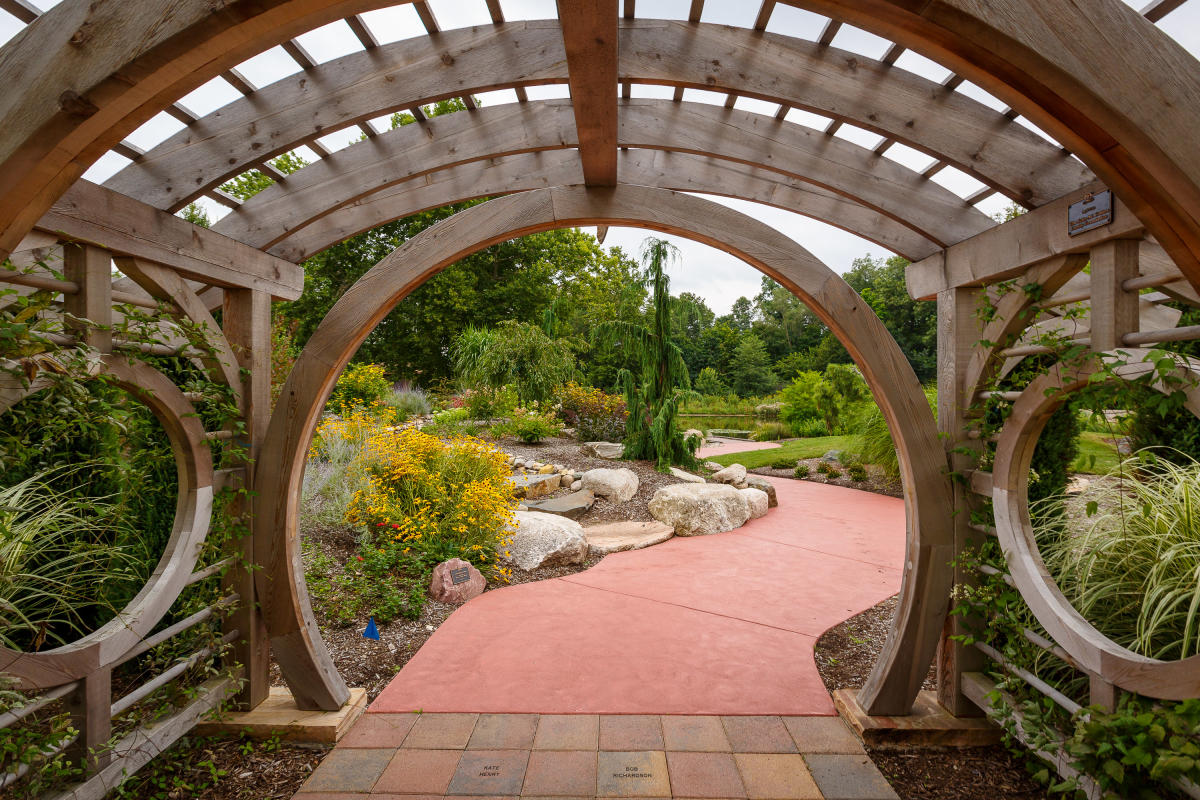When you’re in Elkhart, Indiana, making a beeline to Wellfield Botanical Gardens is a must. The ideal respite from a busy day, the gardens are fun for families, couples, or even solo travelers. Here’s everything you need to know to help you plan your next visit.
Wellfield Botanical Gardens - The Basics
While the gardens are definitely not basic, it’s worth giving you the lowdown so you’ve got your bearings, mainly if you’ve never visited before. First, let’s talk about why it’s called a botanical garden as opposed to a city park. The reason is a simple one: Wellfield is considered a living museum. Each area (we’ll get into that in a minute) focuses on education and appreciation for it.
Its most recent map showcases 19 different garden spaces, several water areas, three promenades, and several bridges. During peak bloom season, all of the gardens and interest points make for gorgeous photographs, so don’t forget your camera when you go. Paths are clearly marked, and guests are required to stay on them, so leave your swimsuit at home.
A really cool fact about the Gardens is that you can bring a light chair or stool with you if you’re feeling inspired to draw or paint. I love this idea, especially for families that want to make the most out of their visit. Not only can adults channel their inner Picasso or Van Gogh, but children can make art pieces to hang on the walls, too.
When you visit, you may notice a few buildings throughout the gardens. There are actual wells that service the city of Elkhart. While it was once a mere well field with tanks holding two million gallons of water each, the Gardens lease the property. I, personally, consider this a win-win situation as the space is now a beautiful one.

Japanese Garden
If I had to choose only one garden to write about, it would be Wellfield’s Japanese Island Garden. Each space in the garden was perfected thanks to Garden Master Sadafumi ‘Sada’ Uchiyama. While the garden is not huge (it’s only an acre in total), the space that it does have packs a gorgeous punch.
There are three distinct garden areas, and using a landscape design called miegakure, it’s a “hide and reveal” way of decorating so only parts of the garden may be seen from any one place. The jewel on the crown that is the garden is undoubtedly its wooden pavilion. Made from salvaged ash wood, the granite floor combined with the posts is a gorgeous respite and worthy of a visit.
Children’s Areas at Wellfield
Wellfield makes it a point that children can learn in a fun setting, especially with its dedicated play spaces. The Children’s Garden is absolutely adorable as it’s filled with animal statues, making it a no-brainer I Spy game for families to play. As for climbing and playing opportunities, head for the Tree House and its Crow’s Nest Swings.
The Down Under play space is shady and offers everything from a Boulder Nook for peace and rest as well as building materials and built-in spots for education. Feeling tropical? Make sure to check out the Tiki Hut with a cool thatched roof. On warmer days, the sand play area is a great place for the kiddos to dig and scoop. While shoes need to be worn throughout the Gardens, if you’re in the sand, you dig your tootsies right in without them.
What About Food at Wellfield?
As the Gardens are living museums, no outside food or alcohol is allowed during your visit. Having written that you are allowed drinks and water bottles. There’s a refillable water bottle station bear the Children’s Garden to keep you hydrated. Make sure you eat before or after your visit so there are no hungry bellies to distract you from the beauty.
Coming Soon
2024’s theme at Wellfield is the Year of Fresh Perspectives (#FreshPerspectives). When you visit, you’ll notice big changes are happening! In July of 2023, Wellfield began construction of their Events and Visitors Center Expansion Project. The $14m Project realizes four key master plan features—a new 12,000 sq.ft. Visitors Center with event capacity, Open Air Pavilion, relocation and repurposing of the existing Visitors Cottage, and increased parking capacity. These features will provide not only a transformational guest experience with necessary infrastructure and amenities, financial sustainability for the future, and increased mission-effectiveness, but also deliver increased quality of place and promote economic development of our area.

